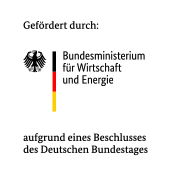Increasing the energy and resource efficiency of electric steelmaking through holistic, quality guided production control
Steel production is increasingly dominated by high quality demands and requirements to reduce the environmental impact. Especially the high energy consumption with the connected CO2 emissions calls for measures to achieve a significant reduction.
The production of steel in an electric steelmaking plant is performed along a process chain of several steps. Steel scrap is molten down in an electric arc furnace, and the melt is refined within the following plants of secondary metallurgy, to achieve the required quality for casting. This one is defined by temperature, chemical analysis and cleanness of the steel melt at delivery to a continuous casting plant.
The overall aim of the project was to provide a contribution to diminish the energy consumption of electric steelmaking by increasing the energy and resource efficiency while simultaneously meeting the high quality demands. For that purpose, a through-process on-line control system was developed. Direct savings in electrical energy were achieved by an optimal distribution of the energy input in the different process stages, using a dynamic energy balance calculation along the process route. An indirect reduction of energy consumption is given by savings in the alloy materials by application of through-process optimal alloying strategies. Furthermore an improved compliance with the quality demands as well as an increased yield, leading to lower energy consumption, were achieved.
The complete system for optimised process control was implemented and tested in the electric steelmaking plant of the Deutsche Edelstahlwerke GmbH in Siegen. With the help of the optimised temperature control the electrical energy input in the ladle furnace can be reduced by 3.85 kWh/t. Regarding the consumption of alloy materials savings of about 2.30 €/t can be expected. The control of oxygen input in the electric arc furnace based on measured off-gas data led to a decrease in oxygen input by 10 %, connected with a diminished chromium slagging with decreased consumption of reducing agents and slag formers.
The targets of the project regarding energy and resource savings were largely reached. It is planned to transfer the system for optimised process control to further electric steelmaking and also to oxygen steelmaking plants.
Report
 The project was funded by the Federal Ministry of Economics and Technology on the basis of a resolution of the German Bundestag within the framework of the 5th Energy Research Programme of the Federal Government under the funding number 0327408A/B/C.
The project was funded by the Federal Ministry of Economics and Technology on the basis of a resolution of the German Bundestag within the framework of the 5th Energy Research Programme of the Federal Government under the funding number 0327408A/B/C.
